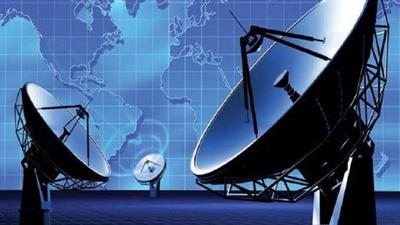
Digital Communications: From Beginner to Expert
Posted on 19 Apr 01:57 | by LeeAndro | 37 views

Published 04/2022MP4 | Video: h264, 1280x720 | Audio: AAC, 44.1 KHz, 2 ChGenre: eLearning | Language: English + srt | Duration: 25 lectures (12h 22m) | Size: 8.55 GB
Learn the exact generic meaning of modulation and why we must have it in most telecom systems
Gain the ability to apply digital theorems for communication systems
Understand most common transmission techniques in digital communication systems
Identification of signals and modulation types in digital communication systems
Calculation of digital communication system performance
Design and analysis of efficient digital communication systems
Design of channel equalization and symbol synchronization systems
Interpret the results of numerical communication coding techniques according to performance analysis
True desire to learn this subject
Basic knowledge in Mathematics
Basic knowledge in signal processing
No programing experience required
The course gives a comprehensive and detailed view of the general structure of digital communication systems including transmitter and receiver designs as well as the different types of wireless channels that may be encountered in communication systems.
In particular, it covers topics like real and complex random vectors, signal space representations, and advanced digital modulation/demodulation techniques such as ASK, PSK, FSK, BPSK, M-ASK, M-PSK, M-FSK, QPSK, QAM, OFDM, OFDM-IM, OFDM-SNM, OFDM-SPM, and MIMO-SM. In addition, the course will cover digital data transmission over noisy and fading channels, as well as the design of ideal transceivers for recovering the received data. Moreover, the calculation of key performance metrics in digital communication systems such as bit error probability, data rate, and throughput will also be explained and discussed in this course.
More specifically, the covered topics in the course are listed as follows
Lesson 1: Introduction to the basic processing blocks in digital transceivers systems (source coding, channel coding, modulation, pulse selection, synchronization, detection, demodulation, decoding, equalization).
Lesson 2 – More details about basic processing blocks + Quantization and Analog to digital conversion (ADC).
Lesson 3 – Quantization Noise and its probability distribution function (PDF) in pulse code modulation (PCM).
Lesson 4 – Nonuniform Quantization + Advantages of PCM + Line codes & D-encoding.
Lesson 5 – Division Multiplexing (TDM).
Lesson 6 – Digital Multiplexers and their different types.
Lesson 7 – Delta modulation: Concept, Advantages, Disadvantages, and Solutions.
Lesson 8 – Linear Prediction Filters (LPC).
Lesson 9 – Base-band Pulse Transmission: Matched Filters.
Lesson 10 – Probability of Error over AWGN Channel.
Lesson 11 – Inter-Symbol Interference (ISI) and Raised Cosine Pulse Shaping Filter.
Lesson 12 – Correlative level (duo binary) coding for doubling channel capacity.
Lesson 13 – Addressing the drawbacks of Correlative level (duo binary) Coding.
Lesson 14 – Passband Data Transmission and Basic Concepts of Digital Modulation.
Lesson 15 – New types of carriers & features for digital modulation (IM, NM, SM).
Lesson 16 – Binary phase-shift keying (BPSK).
Lesson 17 – Quadrature phase-shift keying (QPSK).
Lesson 18 – Offset and Shifted Quadrature Phase-Shift Keying (OQPSK).
Lesson 19 – M-array phase-shift keying (MPSK) & M-array quadrature amplitude (MQAM).
Lesson 20 – Non-coherent modulation: Transmission & detection of non-coherent BFSK.
Lesson 21 – Non-coherent differential binary phase-shift keying (DBPSK) & detection.
So, the course basically covers the general structure of Digital Communication systems, real and complex random vectors, signal space representations, digital modulation/demodulation techniques, digital data transmission over noisy channels and ideal receiver design, the bit error probability in digital data communication, techniques, and basic limits of data communication, entropy, channel capacity, and coding methods.
We are very excited to have you with us on this journey and look forward to seeing you enroll in this unique and interesting course.
For exploring related trainings given by the instructor, you may search for "Researcherstore" at Google or Bing.
COMPUTER EEERING STUDENTS
ELECTRICAL EEERING STUDENTS
TELECOMMUNICATION EEERING STUDENTS
WORKING EEERS WHO WANT TO REFERESH THEIR KNOWLEDGE
DOWNLOAD
uploadgig.com
https://uploadgig.com/file/download/6c4681a6C8B69838/Digital_Communicatio.part01.rar
https://uploadgig.com/file/download/1Bd7Db39Ca2db33a/Digital_Communicatio.part02.rar
https://uploadgig.com/file/download/3ee9468Ccb65866a/Digital_Communicatio.part03.rar
https://uploadgig.com/file/download/d15Dbaa63d9265d9/Digital_Communicatio.part04.rar
https://uploadgig.com/file/download/5f39a2e2dA661dd1/Digital_Communicatio.part05.rar
https://uploadgig.com/file/download/95d0Feea531c3fed/Digital_Communicatio.part06.rar
https://uploadgig.com/file/download/Ec9f600ea8b907E1/Digital_Communicatio.part07.rar
https://uploadgig.com/file/download/6a8f0f6956b1526F/Digital_Communicatio.part08.rar
https://uploadgig.com/file/download/7F49c9304515709e/Digital_Communicatio.part09.rar
rapidgator.net
https://rapidgator.net/file/fc7435ead298ea30515ec84dead47717/Digital_Communicatio.part01.rar.html
https://rapidgator.net/file/1cf4998b53c639be1c8bf03122ac1254/Digital_Communicatio.part02.rar.html
https://rapidgator.net/file/2b5de05c180cb6469515e551629f191b/Digital_Communicatio.part03.rar.html
https://rapidgator.net/file/cb5611ac604568583534583f5eda0d1f/Digital_Communicatio.part04.rar.html
https://rapidgator.net/file/5126d8f9b954718315b5dd635d99e44e/Digital_Communicatio.part05.rar.html
https://rapidgator.net/file/2d6f2b03034ce48bb87b1d7584dc367b/Digital_Communicatio.part06.rar.html
https://rapidgator.net/file/b146a39174abc31aa57895136df3eb17/Digital_Communicatio.part07.rar.html
https://rapidgator.net/file/ebaf62d1fe1eb7a059e01816897e3122/Digital_Communicatio.part08.rar.html
https://rapidgator.net/file/0f8ded6d081c350db81167da0378c855/Digital_Communicatio.part09.rar.html
nitro.download
https://nitro.download/view/EAAA1A91587F05C/Digital_Communicatio.part01.rar
https://nitro.download/view/7080E00A5994E78/Digital_Communicatio.part02.rar
https://nitro.download/view/344D107AA76FDC9/Digital_Communicatio.part03.rar
https://nitro.download/view/5A7439E6452DDAA/Digital_Communicatio.part04.rar
https://nitro.download/view/66D758592A7C850/Digital_Communicatio.part05.rar
https://nitro.download/view/221025BD1B51FF6/Digital_Communicatio.part06.rar
https://nitro.download/view/E5F4252455573DB/Digital_Communicatio.part07.rar
https://nitro.download/view/B22AA451608E864/Digital_Communicatio.part08.rar
https://nitro.download/view/26E4FA28B25FC14/Digital_Communicatio.part09.rar
Related News
System Comment
Information
 Users of Visitor are not allowed to comment this publication.
Users of Visitor are not allowed to comment this publication.
Facebook Comment
Member Area
Top News



